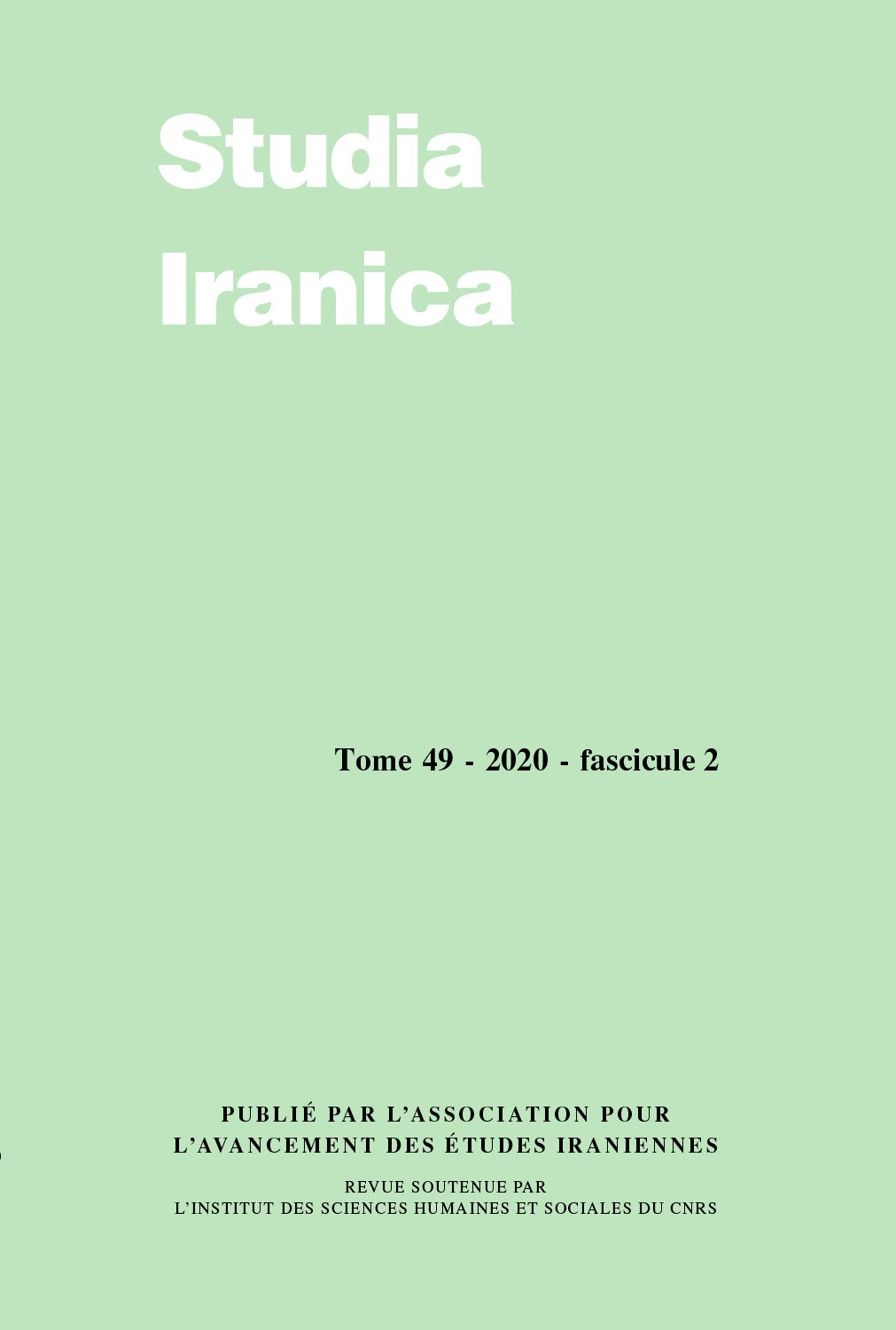 previous article in this issue previous article in this issue | next article in this issue  |

Preview first page |
Document Details : Title: Safavid Imperial tarassul and the Persian inshā' Tradition Author(s): MITCHELL, C. Journal: Studia Iranica Volume: 26 Issue: 2 Date: 1997 Pages: 173-209 DOI: 10.2143/SI.26.2.2003942 Abstract : This paper attempts to examine the literary concept of inshā' and the heavily administrative role it came to play in the compilation od domestic and foreign state correspondence during the early modern period of Iran. This intricate literary tradition, where litterateurs fused prose and poetry in the amorphous genre of 'letter-writing', was bureaucratized to the point that the definition of inshā' came to include, in addition to dilplomatic correspondence, a wide variety of bureaucratic and administrative decrees. With the growth in both the size and sophistication of the Persian chancellery during the Ilkhānid and Tīmūrid periods, the Islamic world witnessed a 'boom' in the production of model inshā' works. This proliferation of both model and instructional texts for future munshīs, combined with the relative homogeneity of Persian chancelleries over much of the early modern era, contributed significantly to the rigid, formulaic nature of Persian imperial tarassul. The apex of this 'letter-writing' science ('ilm-i inshā') was roughly concurrent with the establishment of a bureaucratically and administratively sophisticated state under the Safavid shāhs. Their relations with rival empires in Anatolia and India, combined with various diplomatic dialogues with European expansionary powers, only reinforced the importance of diplomatic tarassul in the state chancellery. This discussion purports to understand in greater detail the three-way relationship existing between the chancellery, diplomatic correspondence, and the Persian inshā' tradition as a whole. In doing so, the paper's specific objective of determining to what extent Safavid munshīs adhered to pre-existing inshā' literature is made much easier. The methodology here is essentially one of comparison; by examining the various mandatory features (blessings, titles, honorifics, verse, preambules) of a number of letters to Christian and Muslim heads of state, we can surmise to what degree formulas and axioms dictated the structure and style of diplomatic correspondence. Cette étude examine le concept littéraire d'inshā' et le rôle fortement administratif qu'il a joué dans la correspondance étrangère et domestique de lÉtat pendant la période pré-moderne de l'Iran. Cette tradition littéraire détaillée, dans laquelle les littérateurs fondaient ensemble la prose et la poésie dans le genre amorphe de l'écriture épistolaire, était bureaucratisée au point que la définition d'inshā' vint inclure, en plus de la correspondance diplomatique, une grande variété de décrets administratifs bureaucratiques. Avec la grandeur croissante et la sophistication de la chancellerie persane pendant les périodes Ilkhanide et Timuride, le monde islamique a été témoin d'une explosion de l'inshā'. Cette prolifération de modèles et textes éducatifs pour munshīs de l'avenir, unis avec l'homogénéité relative des chancelleries persanes durant l'ère pré-moderne, a contribué considérablement à la nature rigide du tarassul impérial persan. L'apogée de cette science de l'écriture de lettres ('ilm-i inshā') fut à peu près concomitan avec l'établissement d'un État administrativement et bureaucratiquement sophistiqué sous les shahs Safavides. Leurs relations avec les empires d'Anatolie et de l'Inde, combinée à divers dialogues diplomatiques avec les pouvoirs européens, renforcèrent l'importance du tarassul diplomatique dans la chancellerie d'État. La présente discussion essaie de comprendre en plus grand détail et comme un tout le rapport entre la chancellerie, la correspondance diplomatique et la tradition persane de l'inshā'. En faisant ainsi, l'objectif spécifique de cette étude de déterminer à quel point les munshīs Safavides adhéraient à la littérature précédente devient beaucoup plus facile. La méthodologie utilisée ici est celle de la comparaison: en examinant les diverses caractéristiques obligatoires (bénédictions, titres, honorifiques, vers, préambules) d'un nombre de lettres aux chefs d'État chrétiens et musulmans, on peut comprendre à quel degré les exiomes et les formules dictaient la structure et style de la correspondance diplomatique. |
|


